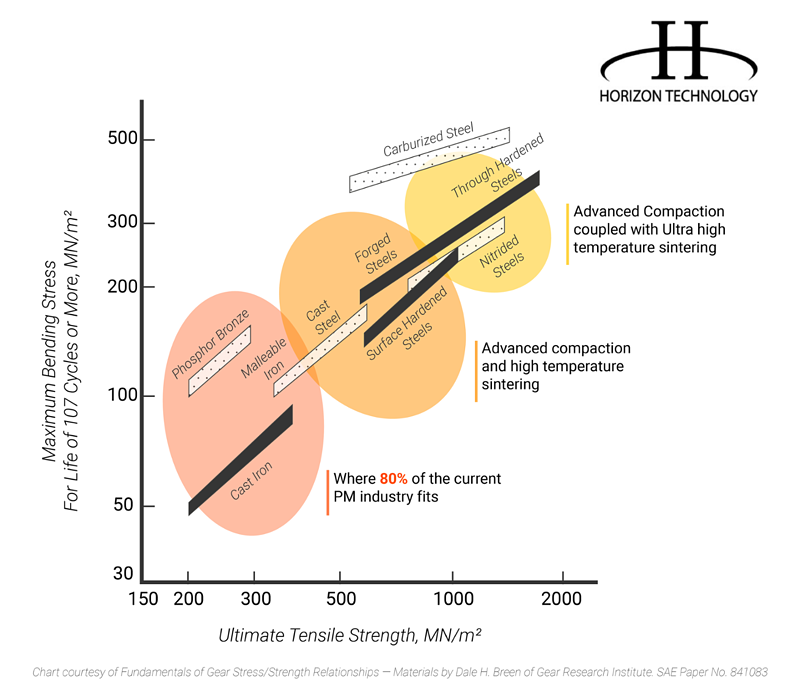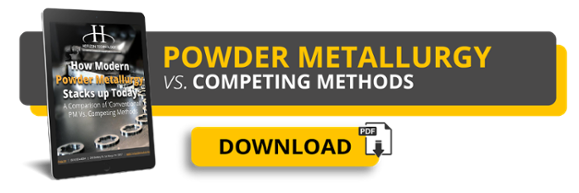Molding. Stamping. Sintering?
The automotive industry is changing, and with change comes new ways of creating vehicle parts — from the engine to the body and everything in between. Conventional ways of manufacturing auto parts are being reassessed -- especially with the rise of e-mobility -- and new methods are getting a longer look.
It’s all in the name of meeting the needs of changing social needs, improving vehicle performance, and reducing costs -- in other words, gaining an edge in an ultracompetitive space. At this point, quality is an assumed given. If you don’t develop with quality, you’re not even in the game.
Let's take a look at some of the more relevant auto parts industry trends for 2020 and beyond. Powder metallurgy has its handprints in all three.
3 Trends in Manufacturing Auto Parts
1. Electrification Is the Future … and in Some Places, the Present
The “electrification” of transportation is unquestionably the future. All over Europe and Asia, it’s already the present.
The goal of many auto companies has shifted to address several global concerns:
- Fuel consumption
- Carbon dioxide emissions
- Energy diversification
One thing that's unique about automotive electrification is that it will greatly simplify and reduce the number of components that will go into the automobile. Internal combustion engines today have about 2,000 parts. Electric drivetrains have about 20.
But do automotive electrification and metal powder have a similar promising future together? Engines and drivetrains aren't the only area where there’s untapped performance potential, but they’re probably the two areas where powder metallurgy (PM) could most benefit.
A more simplified manufacturing approach could benefit powder metallurgy in some ways, but only those engineers willing to adapt to advanced processes and materials.
One example is soft magnetic composite, which allows for greater versatility in part design and manufacturing. Electric motor manufacturers can use these unique materials to improve magnetic performance while also leveraging their 3D shape-making capability.
The end benefit is more efficiency in material use and fuel conservation levels that can meet increasingly strict emissions requirements.
Using powder metal parts to cut costs is nothing new. Using powder metal components to improve electric motor efficiency, however, is still a growing trend.
2. Develop or Die
One look at some of the recent events in the parts supply base, and you realize how important it is for powder metal auto parts to diversify. Companies that aren't innovating, working proactively, and staying on top of industry needs are going to falter.

About 80% of of parts produced through powder metallurgy manufacturers are hanging out in the “safe zone” of long-standing applications. That is, they're doing the minimum, working with current, standard technologies and neglecting to do market and product research on what will keep them competitive moving forward.
The other 20% of PM manufacturers are making parts that open doors to new applications because they’re:
- Structurally stronger
- Higher-performing
- Allow for more complex geometries
The top-tier PM manufacturers of today are working with advanced materials and processes that can compete with forging. It's necessary to look beyond the "safe zone" that most engineers look at -- you can open new opportunities once thought impossible with powder metal.
As an industry, powder metallurgy in the past was able to adapt to what were originally thought to be nontraditional PM parts: bearing end caps, connecting rods, planetary gear set carriers, and variable valve timing (VVTs). The next challenge will be expanding its scope so a greater diversity of parts are incorporated into engines, transmissions, and other parts of the vehicle AND meet the growing demands of next-gen applications.
Automotive companies and OEM auto parts manufacturers are changing how they approach business. If PM operations don't change along with them, they’ll be left breathing exhaust.
3. Good Enough Vs. Great
There will always be a need to make parts as cost-efficiently as possible -- that’s where powder metal currently fits in. But auto makers are starting to notice the missed potential with “good enough.”
Most properties of powder metal parts are considered "adequate." So how does the baseline for quality change?
We mentioned ultra-high-temperature powder metal sintering has a potential to fill this void. There is also the continued development of soft magnetic composite materials. The hope with both concepts is that PM manufacturers can eliminate compromises in performance without jacking up prices.
When you think about products today, the auto sector might be the lone industry where vehicles are made better and longer-lasting than they were 50-60 years ago. That 1965 fridge in your friend’s dad’s basement that you used to steal beer from? Probably still working today. Meanwhile, your nine-year-old fridge at home today is already dying.
There's been little change in the way auto parts are made, but consumers (and environmental agencies globally) are demanding more. In turn, auto design engineers now need PM to become the preferred solution instead of the “good enough” solution.
Which Industry Will Plant Its Flag?
These trends all point toward a need for car part manufacturers to check every avenue for competitive advantages. In turn, powder metal manufacturers need to respond with a next-gen solution that keeps them relevant.
It’s riveting to see the push and pull between PM and competing industries in auto manufacturing and other industries. As demand accelerates beyond 2020, the race will only get more competitive!



